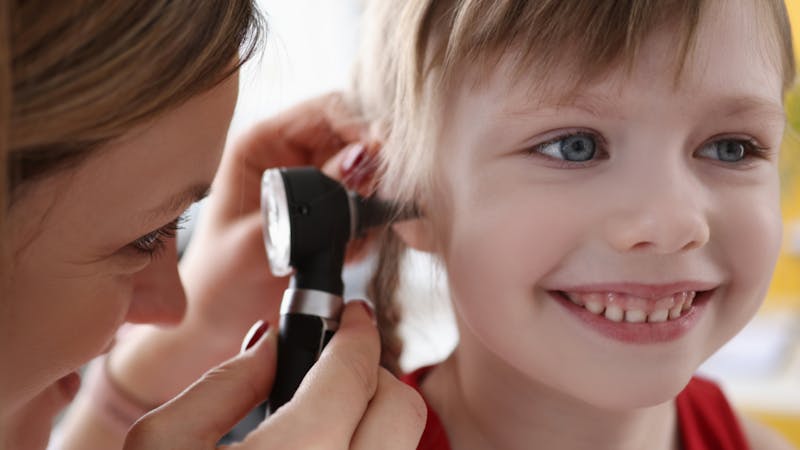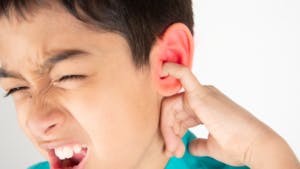
When your child wakes in the middle of the night crying from an ear infection, parents can feel helpless. You know the pain is intense because your child is crying. They might have a fever, and the rest of the family won’t sleep well tonight, either.
This article discusses pediatric ear infections. After reading it, you’ll know how to identify them, how to treat them at home, and when to call a doctor or head to the emergency room.
If you’ve discovered this piece because your child is screaming in pain, or if you see a pus-like discharge or blood coming from either ear, head to the nearest emergency room or urgent care now! Pediatric ear infections can be severe and lead to life-long hearing loss.

Now, let’s talk about the differences between earaches and ear infections, and what you can do to treat them.
“Is this an ear infection, or is it a minor earache?”
Parents should treat any earache as a possible infection and seek medical attention for any ear pain. Some over-the-counter ear drops might help soothe an earache temporarily, and Tylenol (ibuprofen) will ease pain and reduce fever.
Some parents find that a warm compress helps soothe their sleepless child. Just run a clean washcloth under very warm (but not hot) water, and wring it out well. Then hold the compress gently but firmly over your child’s ear.
Types of Ear Infections
Middle Ear Infections
There are a few different types of ear infections. The Centers for Disease Control (CDC) says middle ear infection (acute otitis media) is an infection in the middle ear and one of the most common childhood afflictions in the US.
With a middle ear infection, your child will usually be in significant pain and have a fever. Middle ear infections are usually caused by bacteria. But they can arise as a secondary infection after a nasty cold or flu bug, or a sinus infection.
Swimmer’s Ear
- When the outer ear canal is infected, it’s sometimes called swimmer’s ear.
- It isn’t always caused by swimming or bathing. Your child can have an outer ear canal infection even if they don’t swim.
Young children can’t always accurately describe their ear pain.
Signs of Ear Infections
Savvy parents should watch young children for:
- Overall fussiness and irritability
- Ear pain, or tugging at the ear lobe
- Trouble sleeping, unexplained crying at night
Again, any ear pain or fever is a cause for concern.
When to Call the Doctor
Per the CDC, parents should call the pediatrician when their child has any of the following:
- A temperature of 102 degrees or higher
- Pus, discharge, or clear fluid draining from the ear
- An earache that lasts more than two days
- Worsening symptoms
- Any sign of hearing loss
Remember, this list is not all-inclusive. Call your pediatrician any time you’re concerned about a potential ear infection. They can lead to profound hearing loss if untreated.


